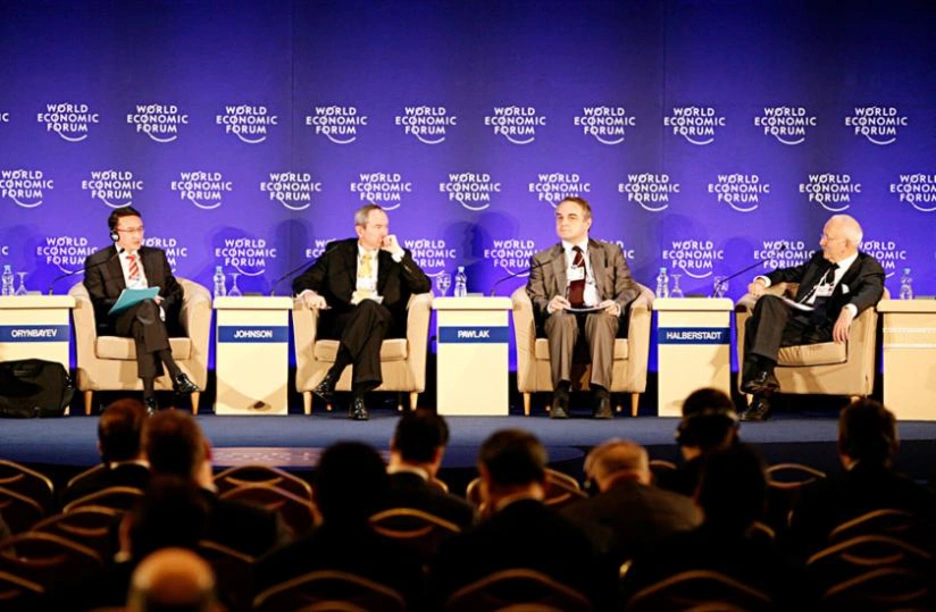Why are there so few women at the World Economic Forum?

[caption id="attachment_2765" align="alignright" width="494"] Panel at Davos. Source: The New Times.[/caption]
Panel at Davos. Source: The New Times.[/caption]
Women aren’t the only group left out of the WEF. Participants from Europe and North America make up about 70% of attendees, despite accounting for 18% of world population. Given the cost of attending Davos – accreditation alone is $20,000 – it’s no surprise that the conference is primarily for the elite.
What makes the 17% figure worse, however, is that the WEF is actually better than most businesses and governments at including women. Only 3.4% of companies in Fortune’s Global 500 have female chief executives. Eleven percent of board members of the world’s biggest companies are women. And, in government, women account for 6% of heads of state.
I should add that the issue of promoting women to positions of leadership is also on the agenda of the IDB. Although women make up 51% of employees at the IDB, they only account for 25% of executive vice presidents and vice presidents and 33% of executives and country representatives.
Those caveats aside, here are some of the consequences of excluding women (which also apply to other marginalized and disadvantaged groups):
- The lack of gender diversity at the WEF excludes women and makes it harder for them to speak up for themselves, keeping women’s perspectives out of the conversation. Some issues, such as climate change and public health, have gender-specific challenges and solutions that need to be addressed.
- Having such a male-dominated conversation decreases the quality of the conference itself. Research shows that diverse groups develop more innovative ideas than homogenous ones. All kinds of diversity – gender, age, racial, personality – allow groups to avoid group think. It’s easy to see why: including different perspectives allows groups to examine problems from different angles and incorporate a wider range of experiences. It’s no wonder then that the WEF has failed to spot important threats. For example, the 2009 financial crisis took world leaders at the WEF by surprise. And climate change and other environmental threats have become less important at the WEF. I can’t help but believe that including more diversity – gender and otherwise – would improve our ability to address global challenges. Which is the objective of WEF.
- On an individual level, rubbing shoulders with the Davos elite is a huge professional opportunity. If women are excluded from Davos, it could be harder for them to become a CEO of a Fortune 500 company. On a longer-term scale, young girls could be inspired by seeing women in leadership positions. Increasing the number of women at Davos could lead to a virtuous cycle, making it easier for women to participate in the future.
- Conformity to gender roles hurts men too. The gendered norms of business often prescribe that men should limit their emotions, jobs and hobbies to masculine ones. And since women are often expected to play a bigger role in child care, men get less paternity leave and other benefits for managing work-life balance.
- Lack of female participation at WEF excludes an important economic force: women control an estimated $20 trillion in spending and make up to 80% of purchasing decisions. Moreover women’s income is growing in emerging markets by 8.1% annually (compared to 5.8% for men).
Even though the lack of women in leadership positions creates a challenge for WEF organizers, the conference needs to seek creative solutions to improve female participation. WEF organizers have made an attempt: the conference implemented a quota system in 2011, requiring companies to send one woman for every four men. But is a quota requiring companies to make 20% of their participants enough?
LIKE WHAT YOU JUST READ?
Subscribe to our mailing list to stay informed on the latest IDB Invest news, blog posts, upcoming events, and to learn more about specific areas of interest.
Subscribe



